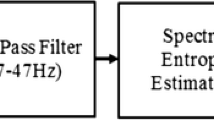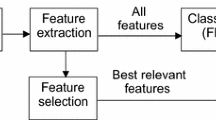Abstract.
In various studies the implementation of nonlinear and nonconventional measures has significantly improved EEG (electroencephalogram) analyses as compared to using conventional parameters alone. A neural network algorithm well approved in our laboratory for the automatic recognition of rapid eye movement (REM) sleep was investigated in this regard. Originally based on a broad range of spectral power inputs, we additionally supplied the nonlinear measures of the largest Lyapunov exponent and correlation dimension as well as the nonconventional stochastic measures of spectral entropy and entropy of amplitudes. No improvement in the detection of REM sleep could be achieved by the inclusion of the new measures. The accuracy of the classification was significantly worse, however, when supplied with these variables alone. In view of results demonstrating the efficiency of nonconventional measures in EEG analysis, the benefit appears to depend on the nature of the problem.
Similar content being viewed by others
Author information
Authors and Affiliations
Additional information
Received: 10 October 2000 / Accepted in revised form: 26 April 2001
Rights and permissions
About this article
Cite this article
Grözinger, M., Fell, J. & Röschke, J. Neural net classification of REM sleep based on spectral measures as compared to nonlinear measures. Biol Cybern 85, 335–341 (2001). https://doi.org/10.1007/s004220100266
Issue Date:
DOI: https://doi.org/10.1007/s004220100266




